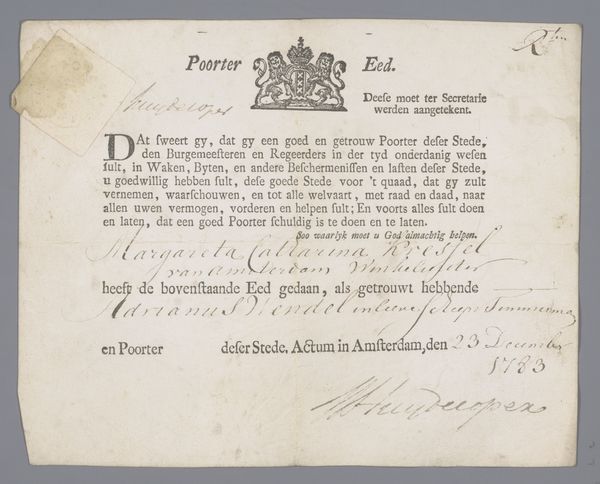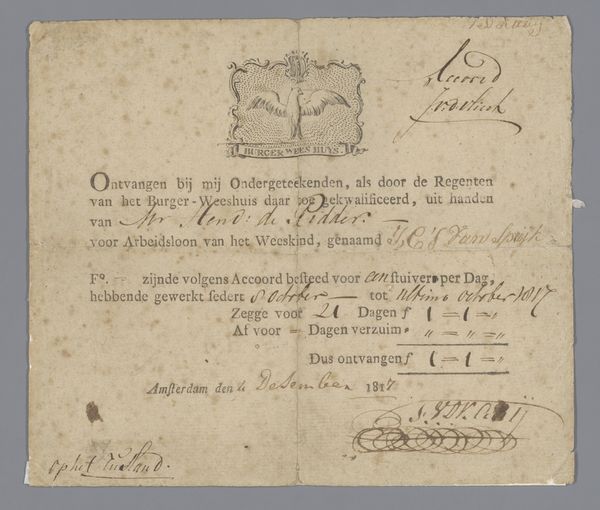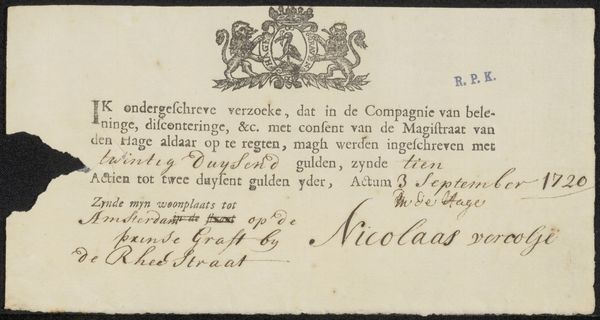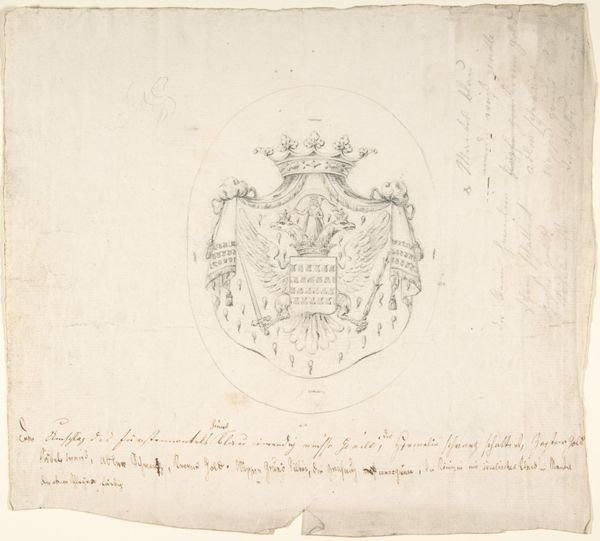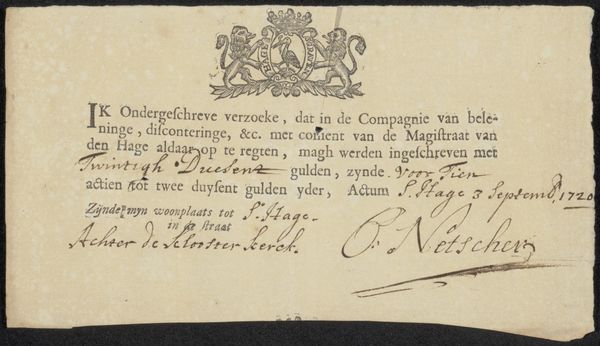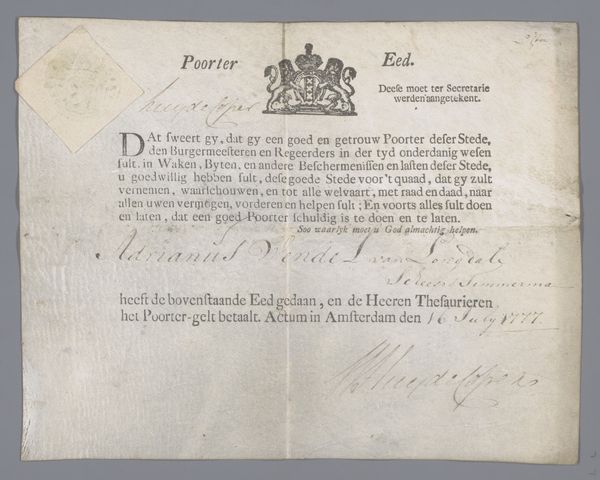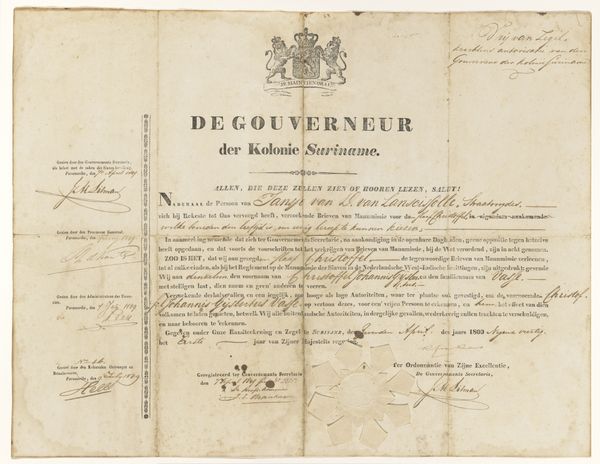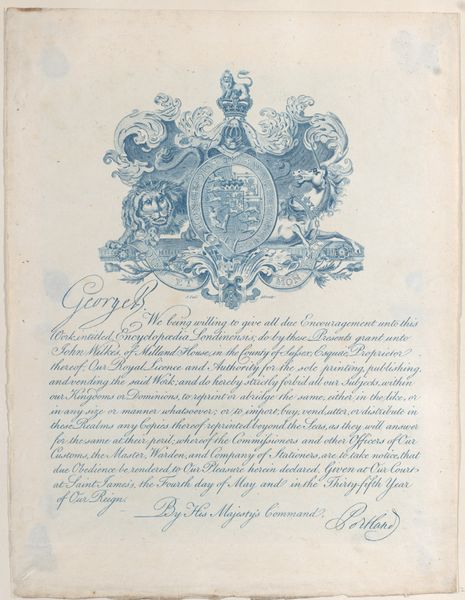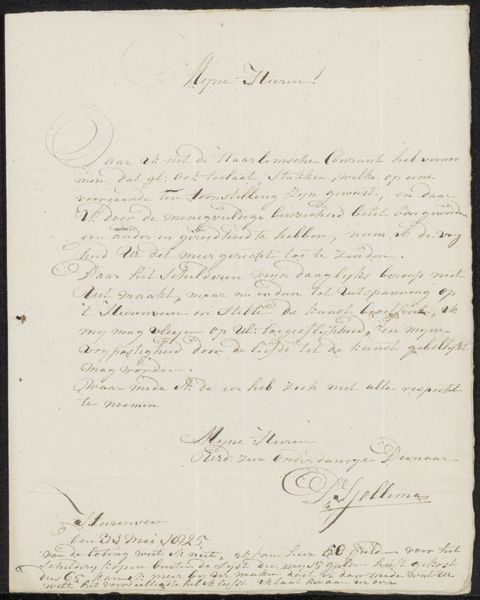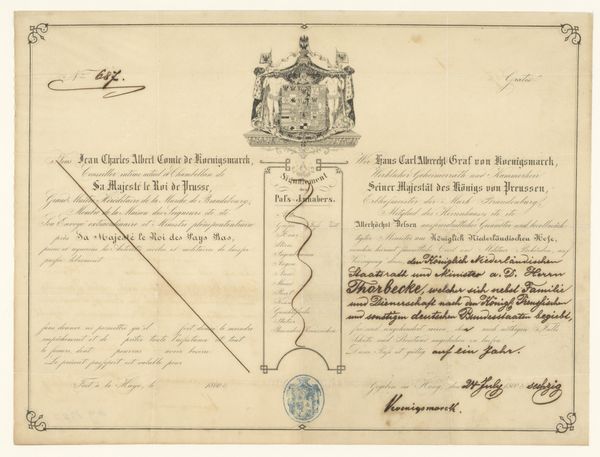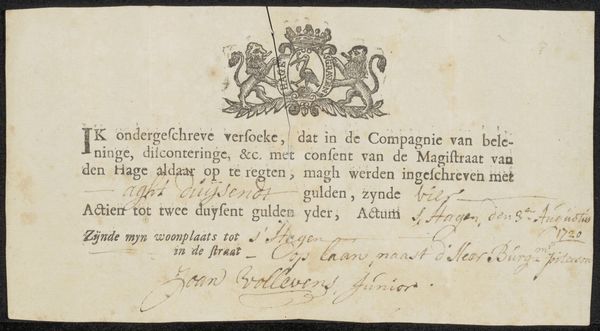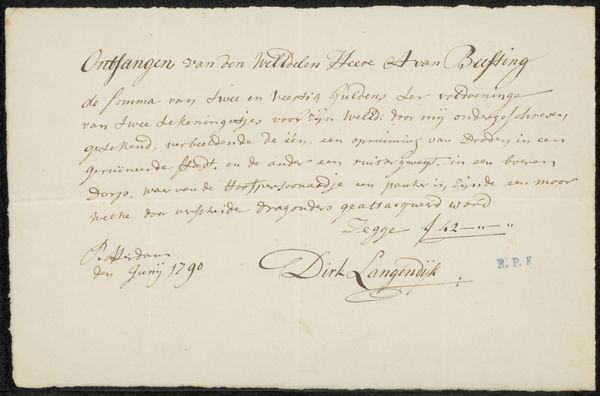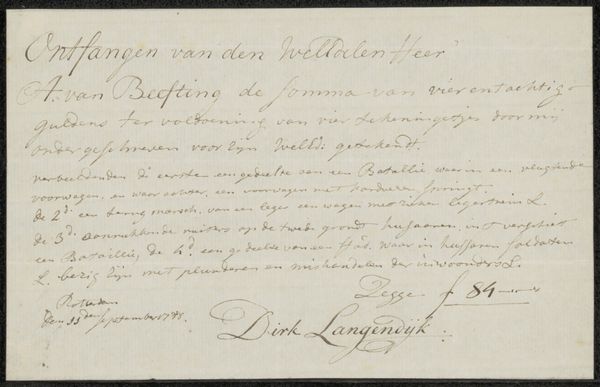
drawing, paper, ink, pen
#
portrait
#
drawing
#
paper
#
ink
#
pen
#
history-painting
#
calligraphy
Copyright: Rijks Museum: Open Domain
Curator: Here we have what's known as "Reisdocument aan Ludolf Backhuysen (II)," a document likely dating back to 1745. It is rendered in pen and ink on paper. Editor: It feels undeniably authoritative, doesn't it? The dense text, elaborate script, and that prominent seal exude a sense of officialdom. The texture of the paper itself seems almost fragile with age. Curator: It served as a passport of sorts, a formal order penned by Charles, Prince of Waldeck, granting safe passage to one Ludolf Backhuysen, allowing him to travel without obstruction to Amsterdam and authorising those subject to Waldeck's command to ensure that Backhuysen would experience no hindrance. The calligraphy is, of course, integral to the overall impression of grandeur. Editor: Indeed. The text itself is meticulously arranged; I would say that its structural order echoes the social hierarchy that the document upholds. Note, too, the heavy reliance on embellishment—flourishes abound, and at the apex, a detailed heraldic crest provides a bold visual reinforcement of power. It seems intentionally designed to intimidate or, at the very least, impress. Curator: You touch upon something key, there. Beyond its functional role, documents like these operated as visual demonstrations of authority, employing recognizable imagery to instill reverence for the issuing power. Notice, for instance, how it references Charles' position as commander in chief for Majesty the Queen of Hungary and Bohemia in the Low Countries. Editor: I agree. The entire composition emphasizes verticality, pushing upward toward that central heraldic crest. There's an undeniable tension between the freedom that it promises Backhuysen and the very formalized and controlled system in which such freedoms must be officially sanctioned. The rigid framework of calligraphy binds the potential liberty, visually reiterating the dependence on the authority issuing the document. Curator: Precisely. These visuals tap into long established visual signifiers of power and social rank—continuing to legitimize certain structures. Editor: And analyzing its material components and construction illuminates the dynamic tension between individual liberties and the imposing framework of aristocratic order. Curator: Understanding this kind of tension helps to understand that the power is always contextualized and historically dependent on systems that allow power structures to grow and flourish, whether we support those systems or seek to challenge them.
Comments
No comments
Be the first to comment and join the conversation on the ultimate creative platform.
